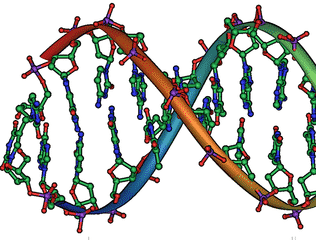It has been reported in the journal Science published on March 28 that some bio-engineers at Stanford University have created a biological transistor that allows them to compute inside living cells, where it could detect disease, warn of toxic threats, and where danger lurk, even self-destruct cells gone rogue.
A transistor is a device that controls the flow of electrons in an electrical circuit, and acts as an on-off switch. Similarly, the biological transistor (the bio-engineering team calls the biological transistor the “transcriptor”) controls the flow of a specific protein — RNA polymerase — an enzyme as it moves along a strand of DNA. The transcriptor allowed engineers to compute inside living cells to record when cells have been exposed to certain external stimuli or environmental factors, or even to turn on and off cell reproduction as needed.
Jerome Bonnet, a postdoctoral scholar in bio-engineering and the paper’s lead author said, “Transcriptors are the key component behind amplifying genetic logic”. In fact, the bio-engineered devices do not represent a computer, but they allow for logical operations, such as “if this-then that” commands, one of three basic functions of computers (the other two being storing and transmitting information). In other words, using transcriptors, the team has created ‘logic gates,’ which can derive true-false answers to virtually any biochemical question that might be posed within a cell.
The researchers hope these transistors could eventually be built into microscopic living computers. These computers would be able to accomplish tasks like telling if a certain toxin is present inside a cell, seeing how many times a cancerous cell has divided or determining precisely how an administered drug interacts with each individual cell. However, the bio-engineering team has published the details about how they made a biological transistor from genetic material — DNA and RNA — in place of gears or electrons in the magazine Science on March 28.
Source: Science (Magazine)
Thanks To: Extreme Tech
[ttjad keyword=”desktop-computer”]


